Sassuolo hosted Inter for what was expected to be a fierce battle keeping in mind both teams’ attacking prowess and their current positioning in the top three of Serie A along with Milan.
Inter grabbed the three points in a 3-0 victory, but although the result would assume a very one-sided game, the meeting was full of chances for both teams. It turned out though that the Nerazzurri were better prepared and managed to secure the win by adjusting to Sassuolo’s style of play and lured them into a trap of individual errors and uncertainty.
The Neroverdi expectedly relied on high pressure and creating as many opportunities as possible, but Inter trusted their guts and focused on intelligent marking and quick actions in attack to achieve a balanced performance both defensively and upfront.
Both teams created quite a few goal-scoring opportunities but Inter managed to take advantage of the opposition’s mistakes better and score three times, while the lack of precision from the Sassuolo players resulted in their failure.
In this tactical analysis, we will examine why Sassuolo’s usual strategy didn’t work out against Inter and how the Nerazzurri’s tactics helped them in taking the most out of the game.
Line-ups and formations
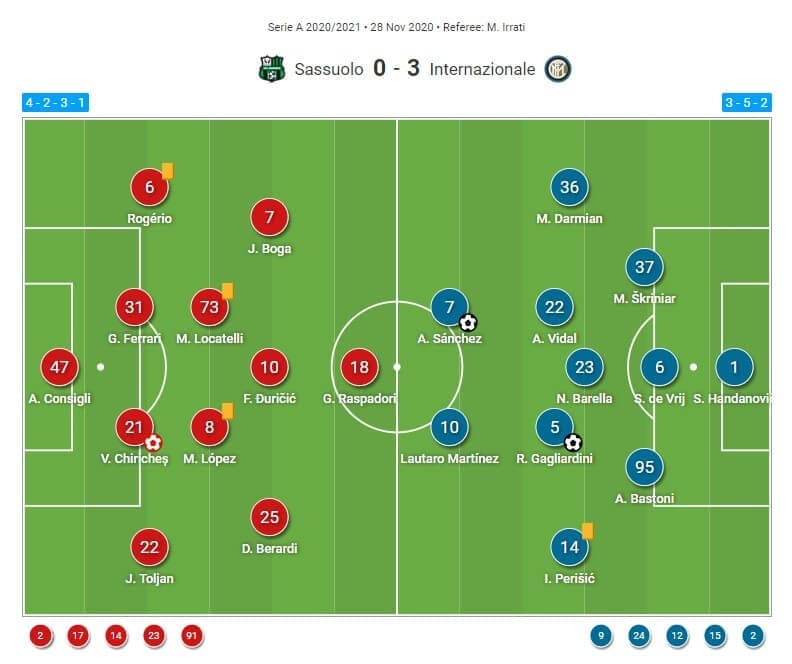
Roberto De Zerbi relied on his usual 4-2-3-1 formation in aim to continue with his possession football and high pressing strategy. The goal was covered by Andrea Consigli, while the four-man backline consisted of Rogério, Gian Marco Ferrari, Vlad Chiricheş and Jeremy Toljan. Rogério would overcommit to his attacking duties that he would often fail to support the defensive actions properly, exposing his team on a few occasions. The central midfield included Manuel Locatelli and Maxime López with Filip Đuričić in front of them. While they were very beneficial for keeping the possession and for Sassuolo’s ball progression, Locatelli and López were often late with their support to the backline.
Jérémie Boga and Domenico Berardi provided width, while Giacomo Raspadori was the striker and covered the central areas. The 20-year-old Raspadori couldn’t meet the expectations failing to produce a single shot throughout the game making it more difficult for Sassuolo to convert their chances into goals. Although they did get a lot of time on the ball and most of their possession in the opposition half, Sassuolo lacked the precision all over the pitch, while Inter’s press often forced them back, which resulted in a lot of passes with high pass accuracy but actually decreased their explosiveness.
Antonio Conte also opted for his favoured 3-5-2 scheme. Samir Handanovič was between the posts with Alessandro Bastoni, Stefan de Vrij and Milan Škriniar in the back-three. Ivan Perišić and Matteo Darmian covered the wide areas as wing-backs, while Roberto Gagliardini, Nicolò Barella and Arturo Vidal helped centrally. Conte relied on Lautaro Martínez and Alexis Sánchez as the pair up front.
While at first, they started with their usual attacking approach, Inter slowly changed their strategy and adapted to Sassuolo’s high press and intensity. They focused on their marking strategy and on pressing the opposition in their own half, waiting for an opportunity to gain back possession and use their pace to expose them.
Inter inviting the pressure in their half and Sassuolo falling into the trap
As mentioned, Inter adjusted well to Sassuolo’s attacking strategy and instead of responding with the same and focusing on their constant attacking movement, they decided to stick to a different plan. Considering the risk of Sassuolo’s constant press and aim to win the ball back, Inter realised going forward and staying up high wouldn’t always be the best decision since it could easily expose them at the back.
That’s why they would drop back and invite the pressure in their own half, focusing on an intense pressing strategy and solid marking in order to stop the opposition from creating chances and recover the ball. That, of course, possessed risk, since they allowed their opponents a lot of time on the ball, but was in fact more beneficial since they were able to control the game off the ball and be better prepared. This happened mainly by blocking the passing lanes in the advanced areas and constantly pressuring the ball carrier which most of the time resulted in forcing Sassuolo back.
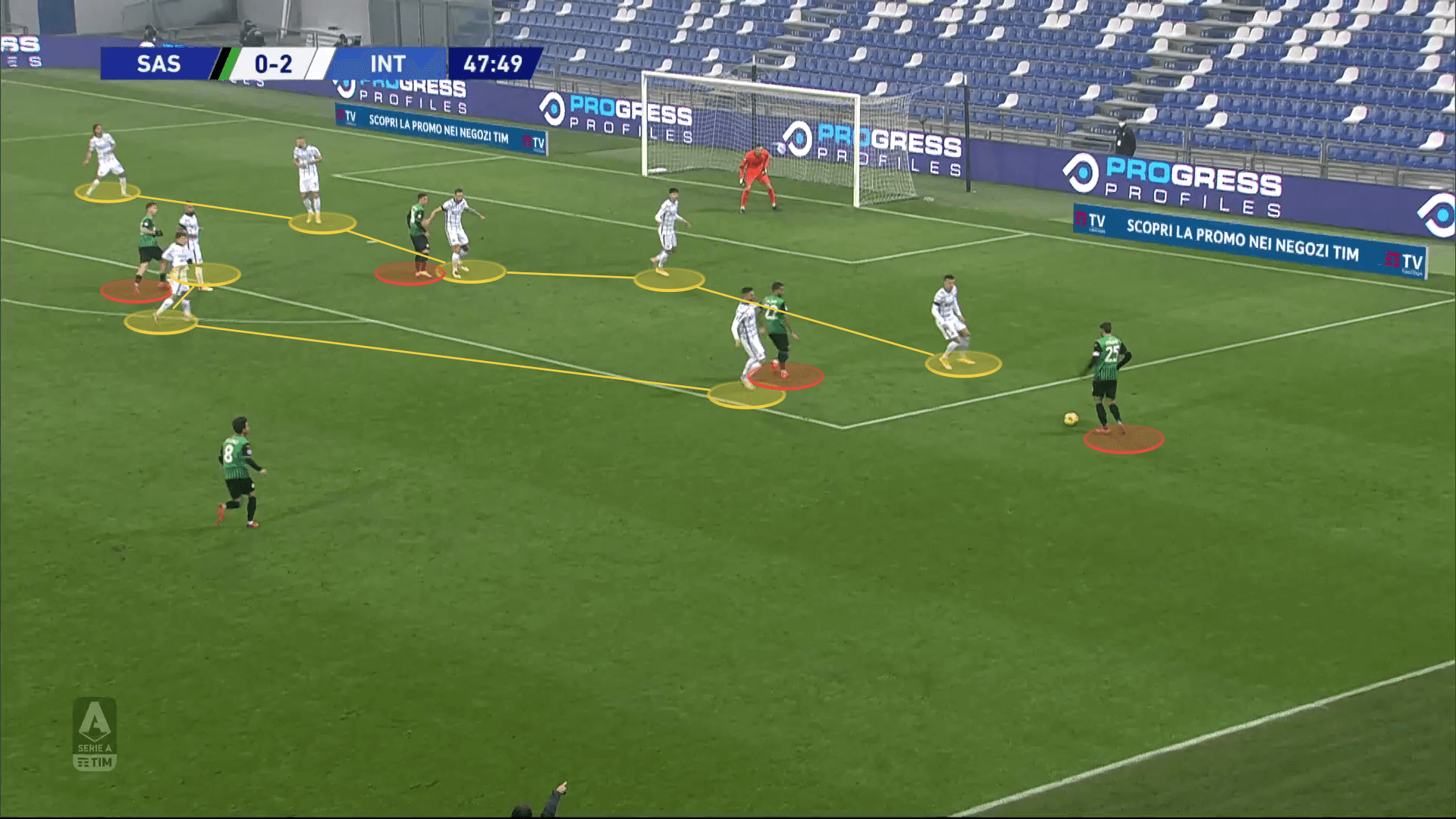
That expectedly took off of their explosiveness in attack. While the Neroverdi still had more of the possession and relied on high pass intensity, almost half of their 697 passes were back passes smartly forced by Inter.
This affected Sassuolo’s efforts on the ball a lot and as a result, they often acted hastily and impatiently in their final third actions. That doesn’t mean they didn’t create chances in front of the goal, but most of them were indeed inaccurate, while Handanovič saved all their three shots on target.
Inter taking advantage of Sassuolo’s attacking overcommitment
Inter very smartly realised that seemingly passing the control over to their opponents might make them fall into a trap and overcommit to their attacking actions and neglect some of their defensive responsibilities. Inter did try to create chances from open play, but their best chances and two of their goals came for them patiently waiting on the counter. They used their high positioning in order to exploit the defence thanks to the forwards’ smart movement and pace.
Inter focused their efforts to win the ball back in their own half which is clearly seen in their “Interceptions” map where 84% of their interceptions have been done in their defensive third, while the other 16% have been done in the middle third.

The same goes with Inter’s offensive duels. Contrary to Sassuolo who had most of their offensive duels in the opposition half, due to Inter’s low positioning and build-up from the back, their offensive duels happened in their defensive third with the help of Škriniar and Vidal who aimed to hold on to the ball and help with ball progression while the rest of the team would move off the ball. This would often catch Sassuolo off guard since they commit many bodies into their attacking actions and the Nerazzurri relying on their pace to expose them was a successful decision.
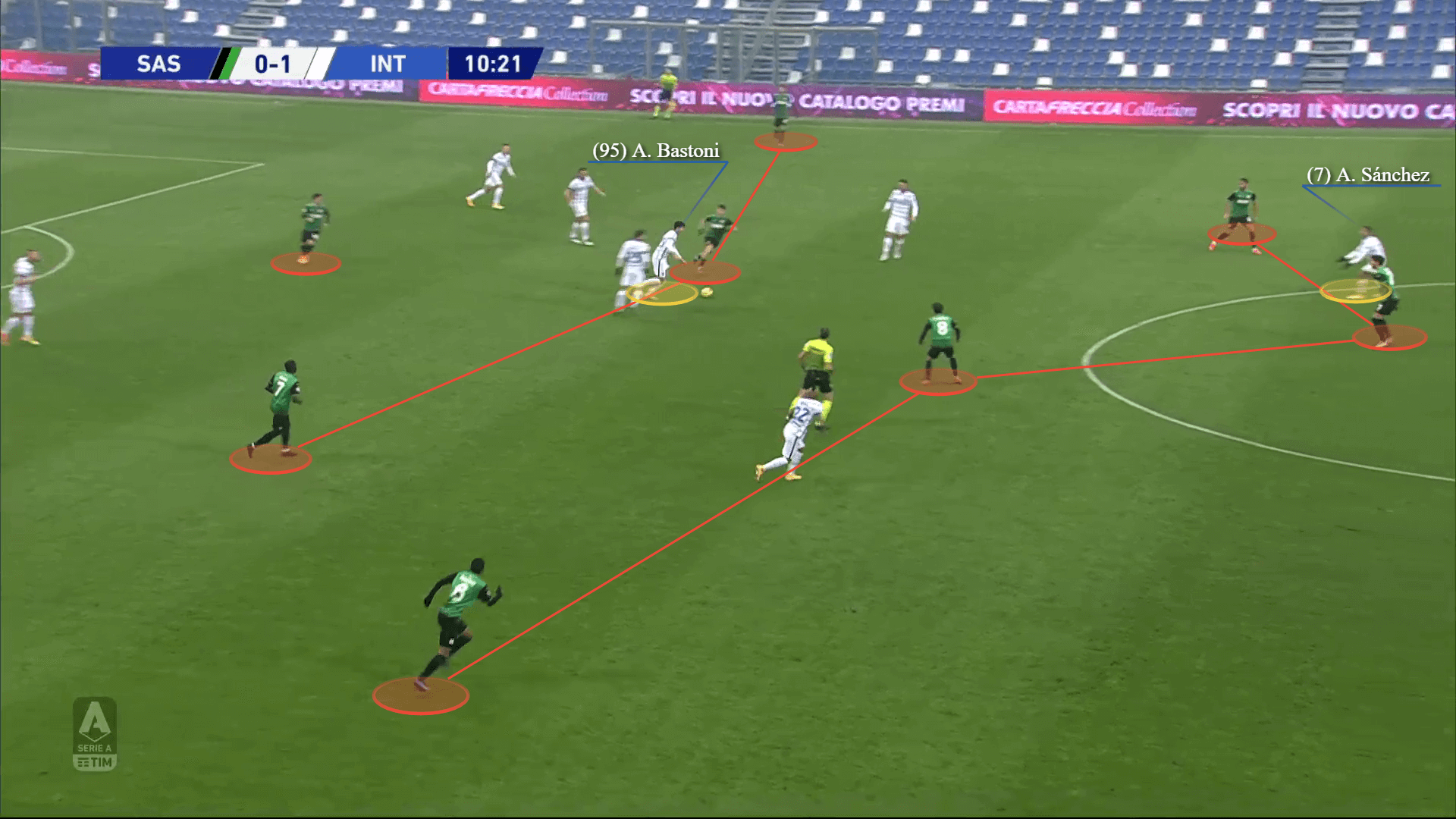
Inter didn’t only rely on counter-attacking actions of course. They had to adjust to Sassuolo’s high press and started using long balls quite frequently in efforts to bypass the press. This was a good solution for distributing the ball to the advanced areas although it didn’t lead to the wanted results in front of the goal.
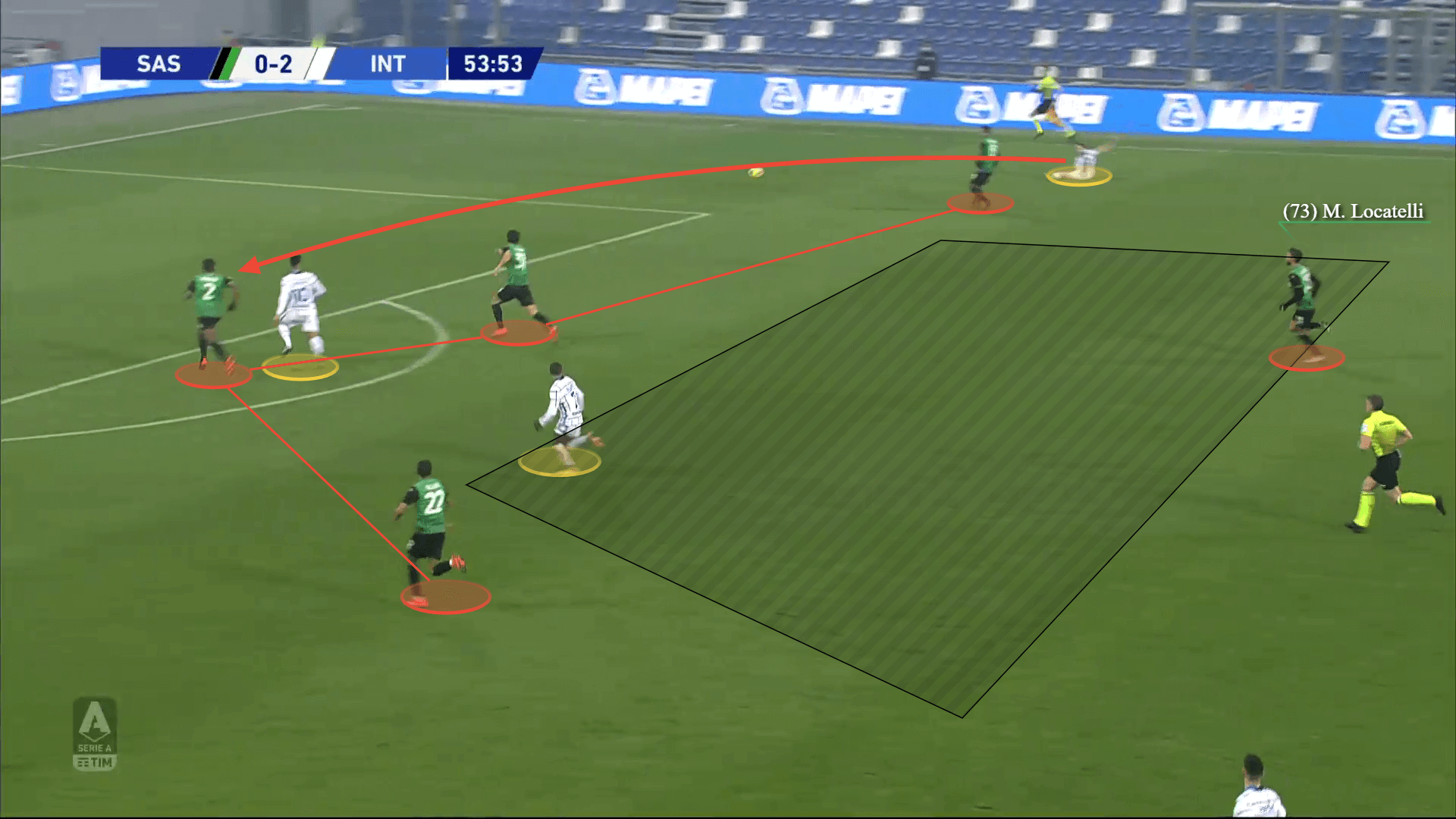
Sassuolo’s defensive response
Sassuolo’s defensive performance wasn’t ruined by their movement and actions as a unit, but more because the players were forced into individual errors and weren’t covering their areas properly. While they did fail to drop back in a timely manner on a few occasions, most of their problems at the back came from unmeasured actions and failed marking strategy.
They focused their ball progression actions on the left, highly involving the full-back Rogério with affected their defensive performance immensely. Especially considering that Inter mainly used the right side in their ball progression and many of their chances came from there. The full-back failed in closing out space and blocking Inter’s efforts from the right. He wasn’t aggressive enough in his pressing and movement, which resulted in quite a few successful crosses from these areas.
Rogério won only one out of his five defensive duels while none of his four crossing attempts was accurate too.
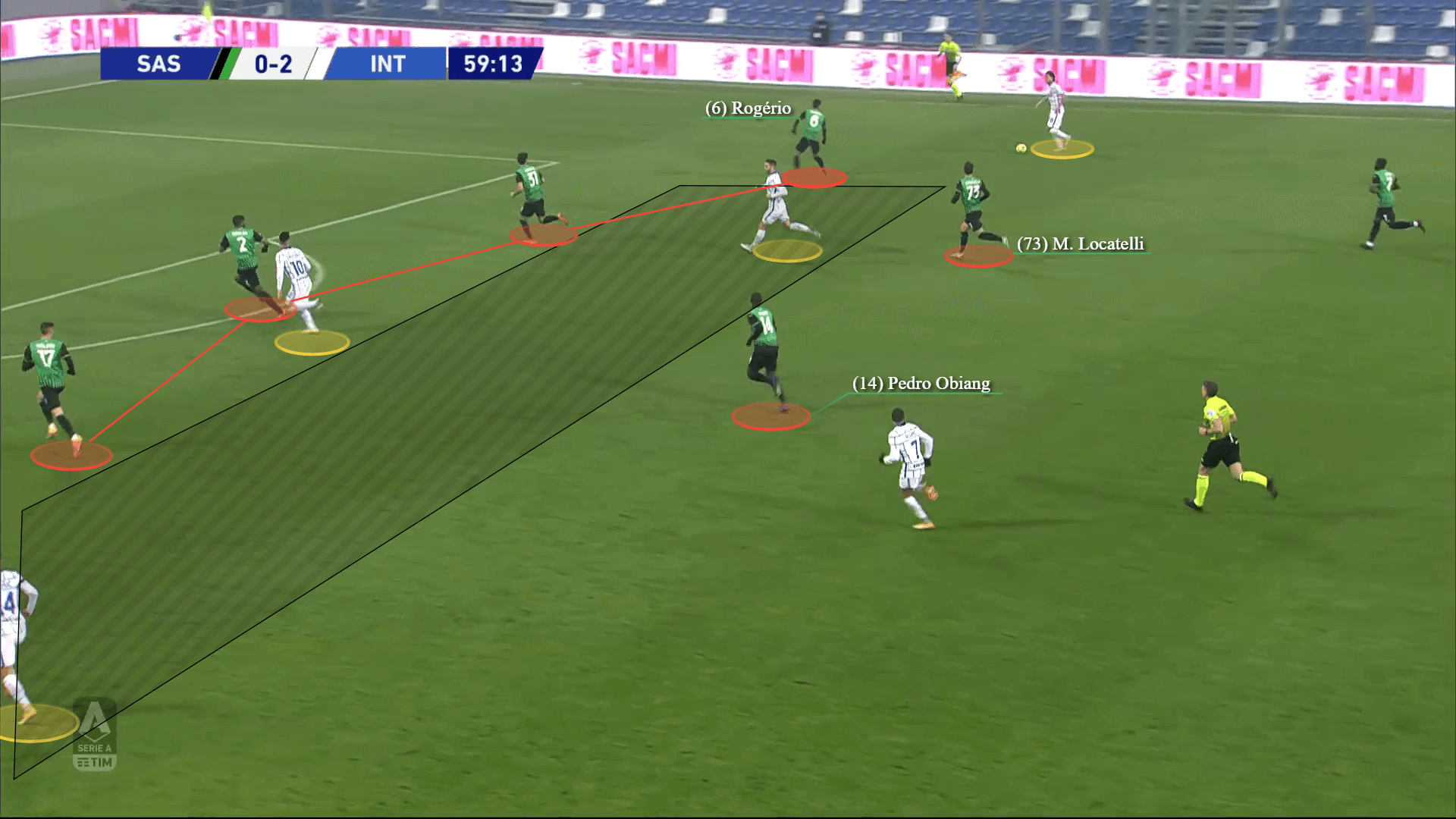
Another weapon that Inter had and Sassuolo fell victim of was their successful ball recovery. Whenever the Nerazzurri weren’t pinned back they saw the opportunity to in creating danger by recovering the ball in the advanced areas and were pretty successful in shooting from these situations. They recovered the ball 64 times and most of the recoveries were executed in the final third and in midfield. This helped them both in stopping the opposition from advancing the ball but also in using pace and individual skills to expose them.
All three conceded goals had a touch of similarity in Sassuolo’s actions. Their spatial awareness was poor and they experienced struggles in marking the opposition successfully on a few occasions. The connection between the lines during defensive transitions was lacking and their defensive performance was affected by that.
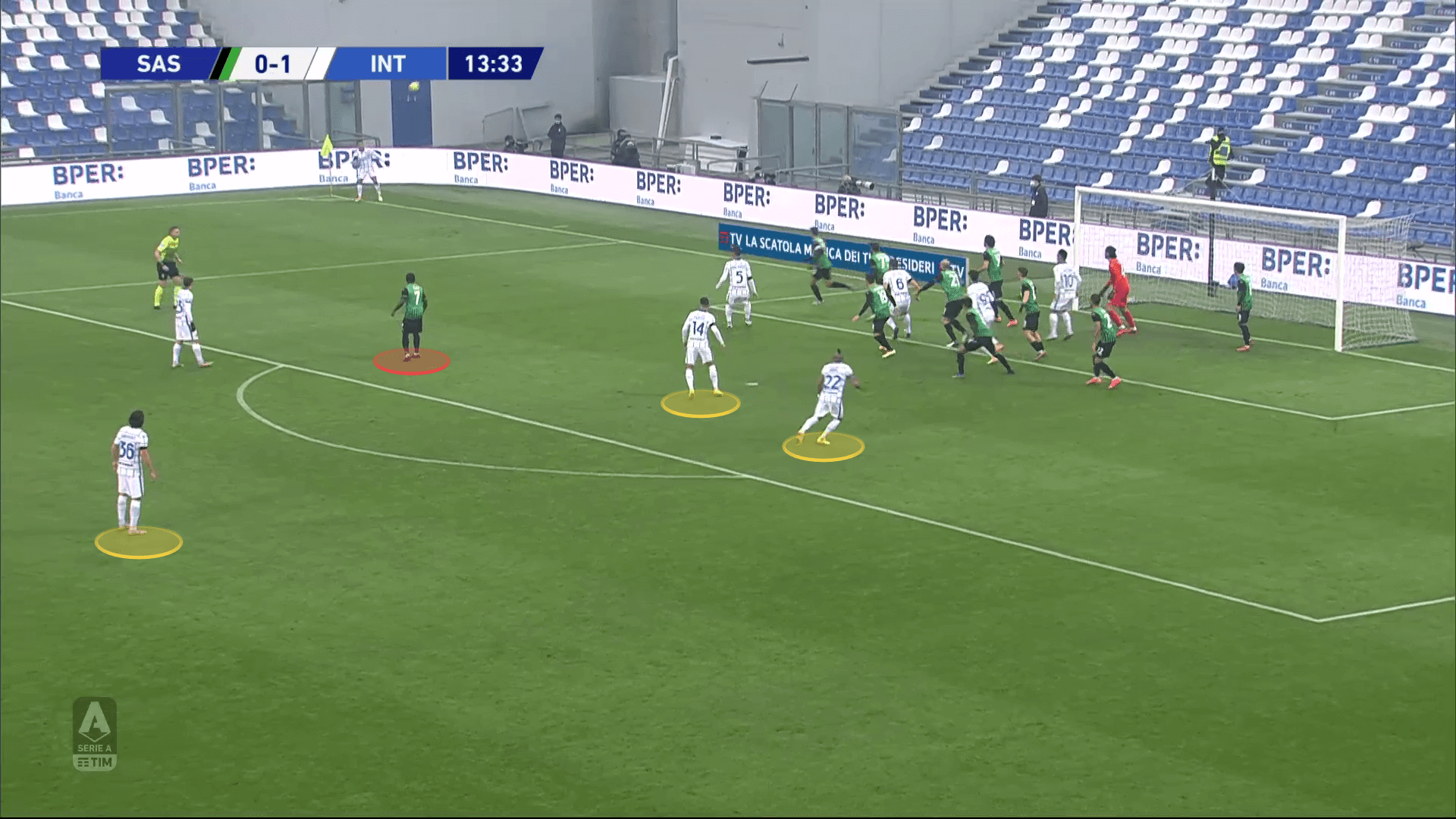
The lack of precision and quality chances
Sassuolo’s biggest problem throughout the night though was their hastiness and the lack of precision in their actions both defensively and in attack. A high percentage of their attempts were unsuccessful starting from their defensive duels and aerials to their crossing and shooting.
While they did create 13 opportunities only a few of them were of real threat. Inter’s defensive actions often forced them out of the key areas and the Sassuolo players weren’t able to produce accurate shots due to failing to reach quality positions. Even when they managed to break through the defence, the lack of good finishing wasted their opportunities. Their crossing attempts also weren’t accurate enough to provide quality balls to the central areas which is another reason for their decreased efficiency in front of the goal.
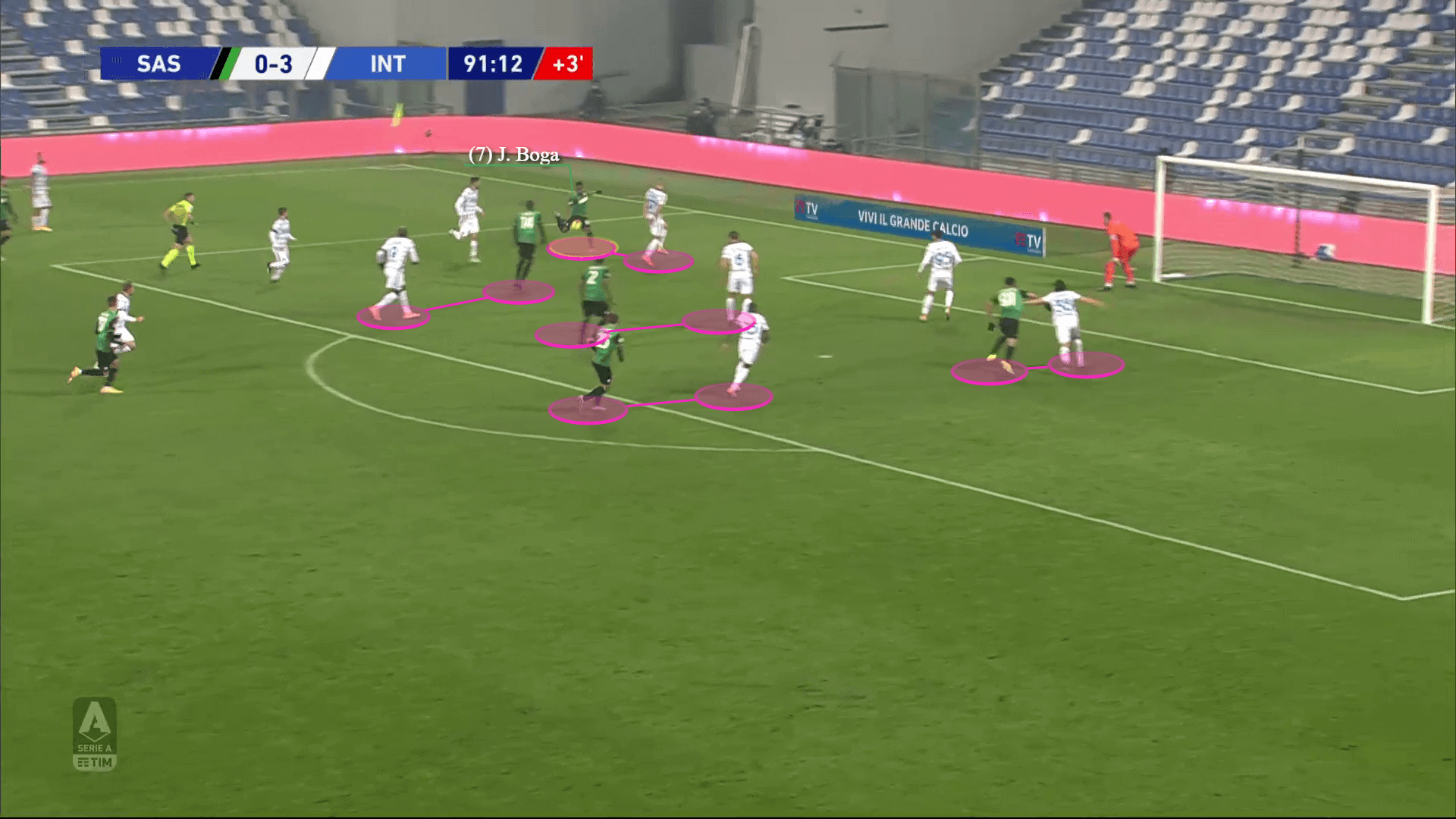
In fact, they created more counter-attacks than Inter (four) but they didn’t manage to take advantage of that and none of them ended with a shot.
Conclusion
Inter successfully turned the events in their favour. Instead of falling victim of Sasshuolo’s attacking approach, they did their analysis and managed to find their weaknesses and expose them successfully. With an increased awareness of the opposition’s actions, they managed to take advantage of their vulnerability and get the three points.



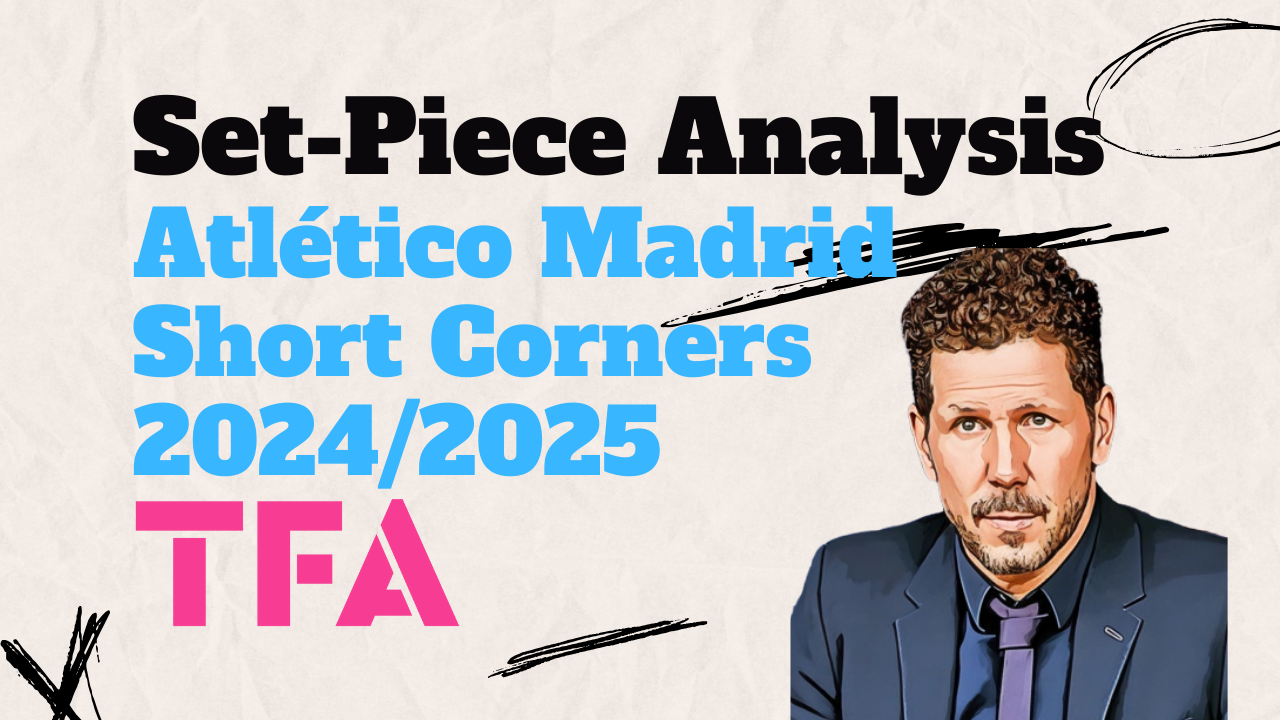
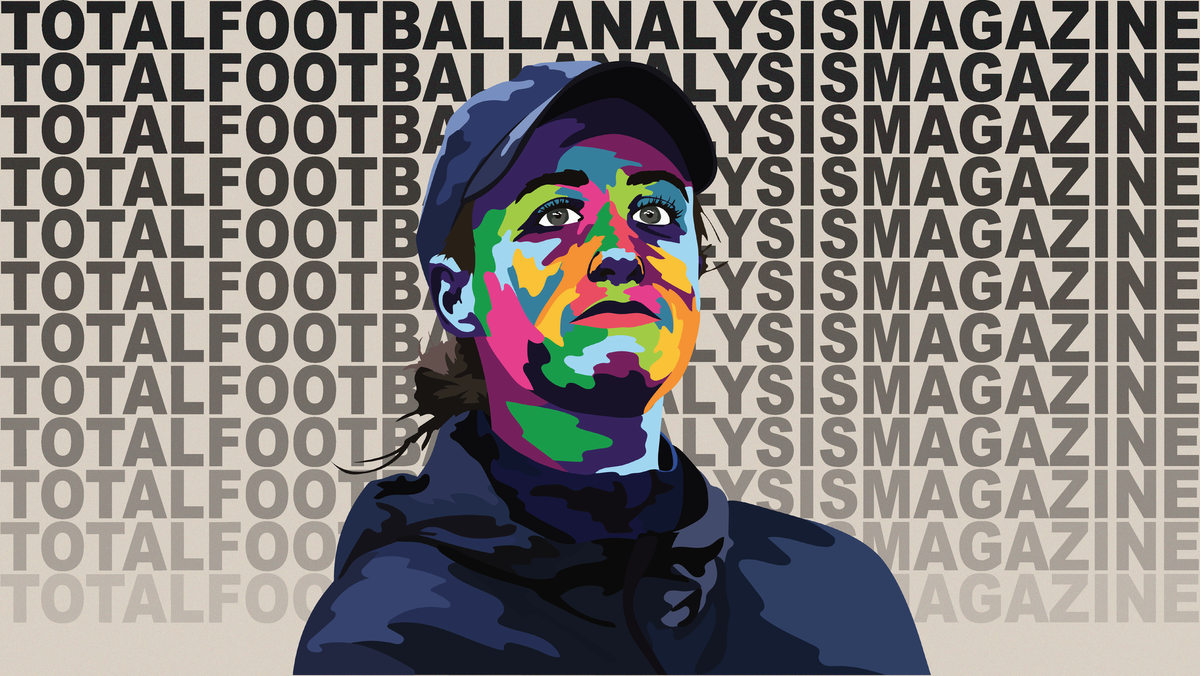
Comments